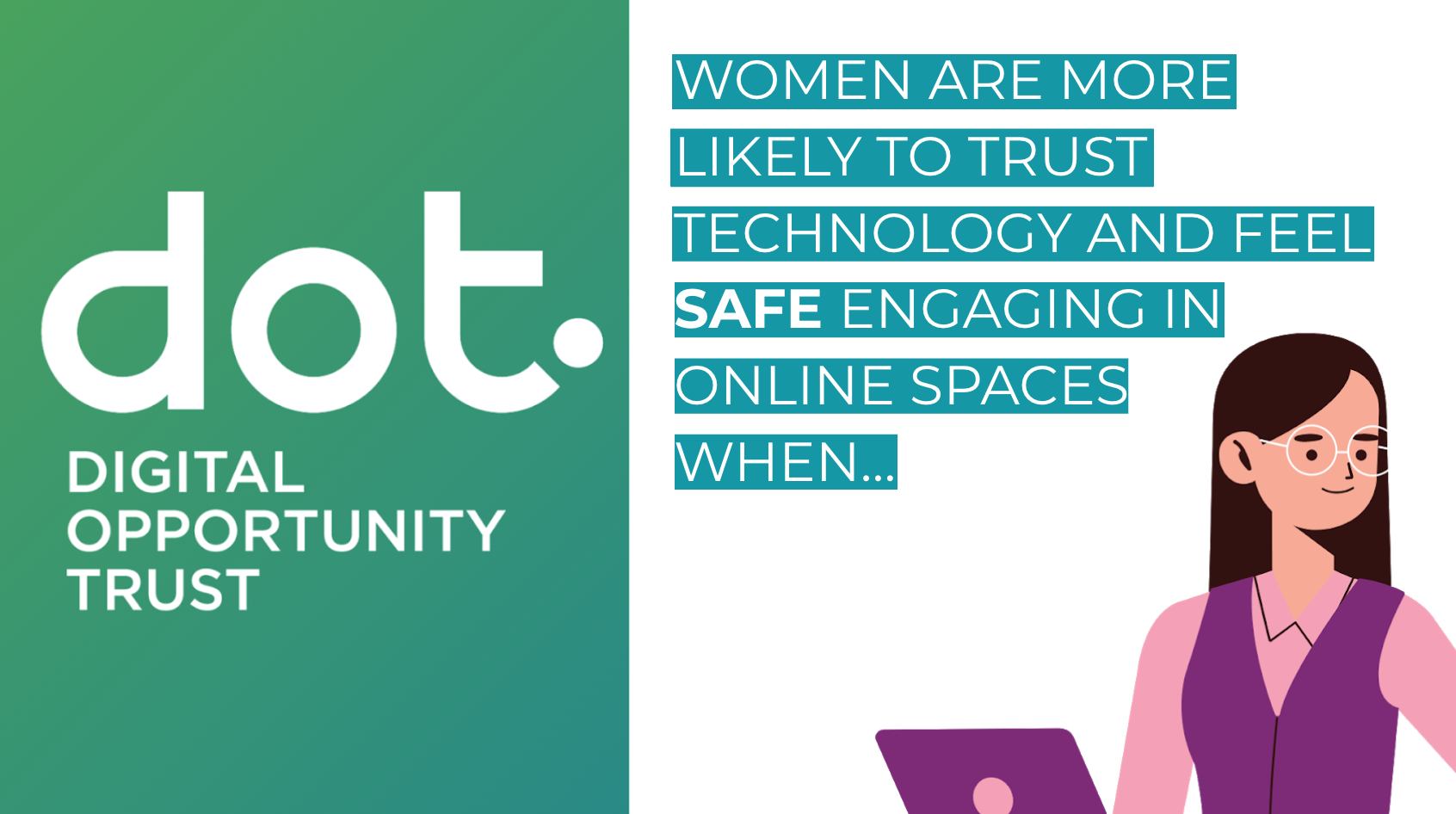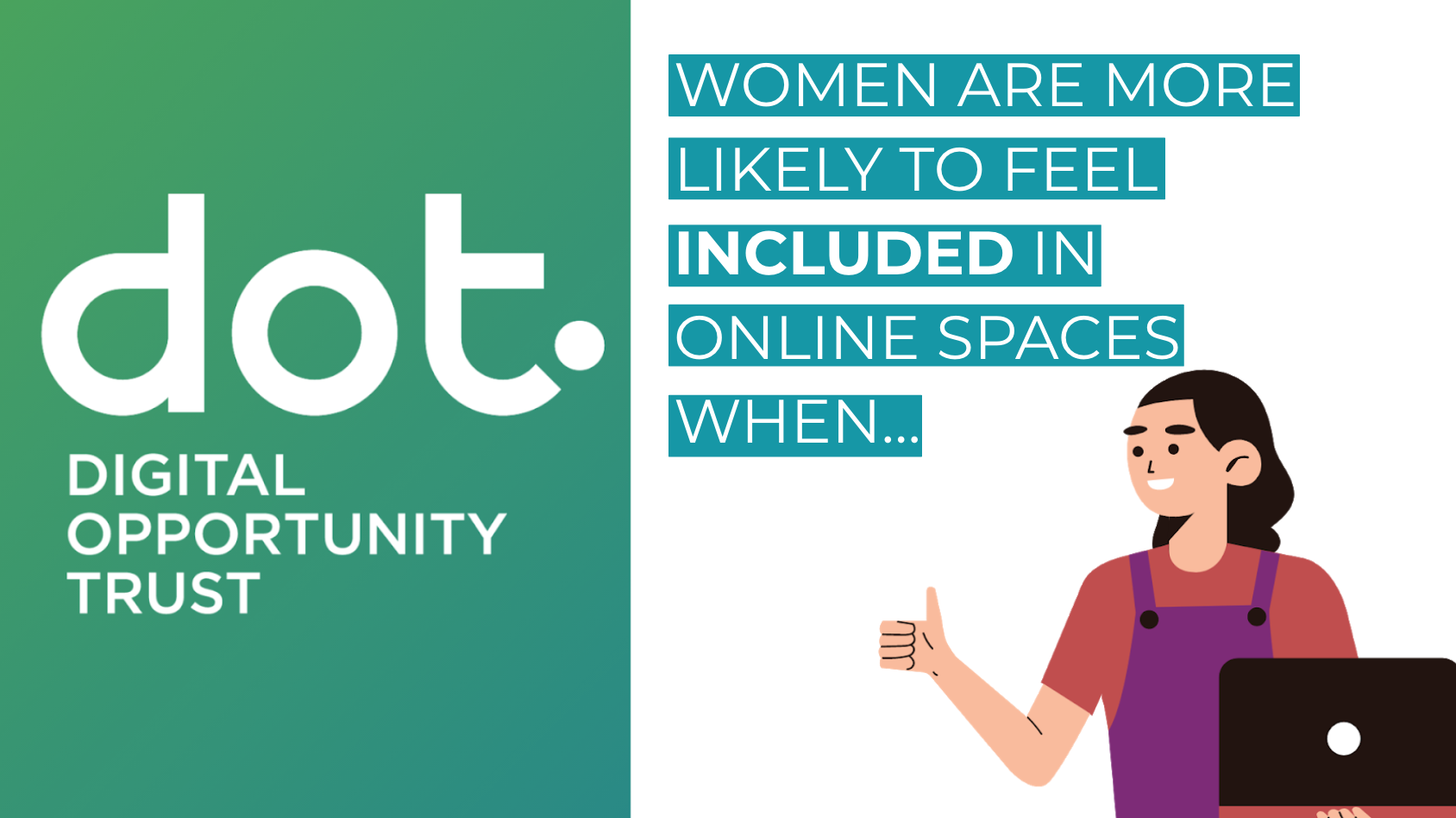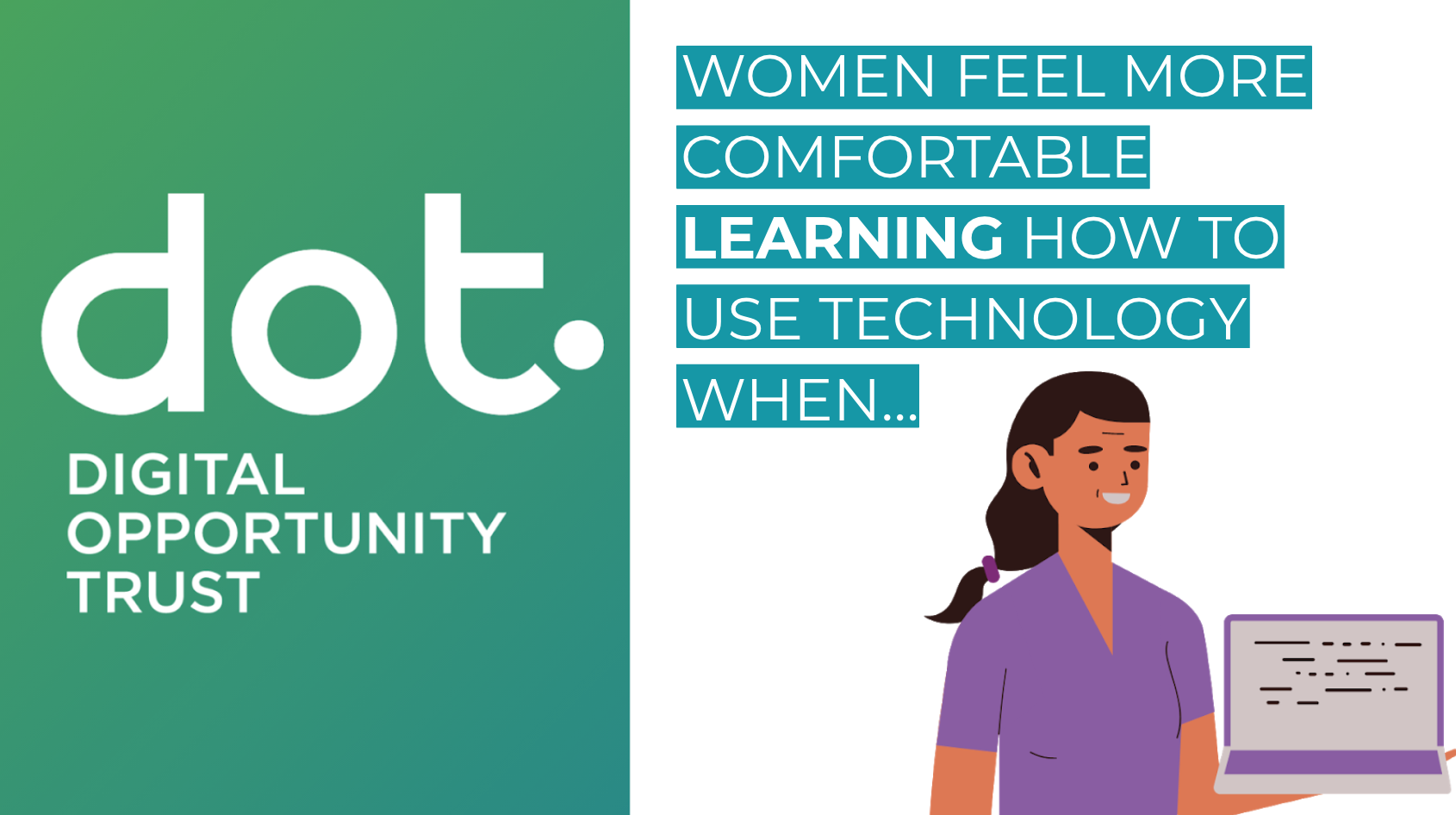How to ensure young women feel safe and included in online platforms
We recently co-hosted an Equals Access Coalition Learning Session about our research into best practices to ensure young women feel safe and included in online platforms.
Led by our youth team at DOT South Africa, DOT has completed extensive user experience (UX) research into how young women in Africa and the Middle East can be supported to engage meaningfully in online platforms and overcome the significant barriers they face to equal participation.
In this presentation, DOT’s lead UX researcher Suzanne Newing shares some of the barriers faced by young women, and how organizations and platforms can help to bridge them.
Here is what we talked about during this virtual learning session on how to ensure young women feel safe and included in online platforms:
Young women have significantly less access to digital technology compared to young men – and when they do have access they lack the opportunities, training and safe online learning experiences for them to excel.
These barriers are driving the digital gender divide.
Over the years, DOT has become an expert in helping young women and girls feel safe online through a number of programs and projects across our network. Most recently, DOT conducted user experience and human centred design research among 300 youth – the majority of which were women – across 9 countries in Africa and the Middle East.
Our user experience research aimed to understand the barriers to women’s online participation, their safety and privacy preferences, and how we might create positive and valuable digital experiences for them – and through this, we developed a set of digital design principles aimed at creating safer and more inclusive online user experiences for women.
 Young women are more likely to trust technology and feel safe engaging in online spaces when:
Young women are more likely to trust technology and feel safe engaging in online spaces when:
- They know that the platform is highly moderated and there are clear reporting mechanisms including a human response and procedure for follow up;
- They have a high level of control over their online presence and interactions, and their privacy settings are easy to access and understand;
- The platform opens the possibility for creating connections outside their own community;
- The platform also fosters opportunities to connect with a larger group of peers.

Young women are more likely to feel included in online spaces when:
- They can easily relate to the content and individuals they engage with online;
- Their online engagement feels as human as possible. Women tend to engage more on platforms that have a conversational tone and interactive user experience;
- The value they can expect from using digital tools and engaging in online spaces is clear from the beginning. Women want to know how these digital tools will support their success, and that of those around them;
- There is an engaging welcoming experience when joining the online space.

Young women feel more comfortable learning how to use technology when:
- Training is conducted in group settings with other women who have similar backgrounds, educational levels, and familiarity with technology;
- They can relate to the person they are learning from, their learning experience demonstrates care, and is customized to their reality.
Here are six key principles to consider when engaging young women online in a digital community, platform design or learning experience:
- Design a digital engagement experience that is engaging;
- Make it easy for women to choose how they engage online;
- Follow up on any negative online experiences to ensure women feel listened to;
- Leverage women’s networks (family, friends, colleagues) to support their learning and digital engagement experience and as sources of inspiration, particularly when it comes to learning something new;
- Make the value of your digital offering and how it relates to women’s lives clear throughout their experience;
- Learn from the women you engage with about how you can continue to improve their digital experience.

